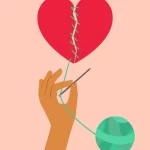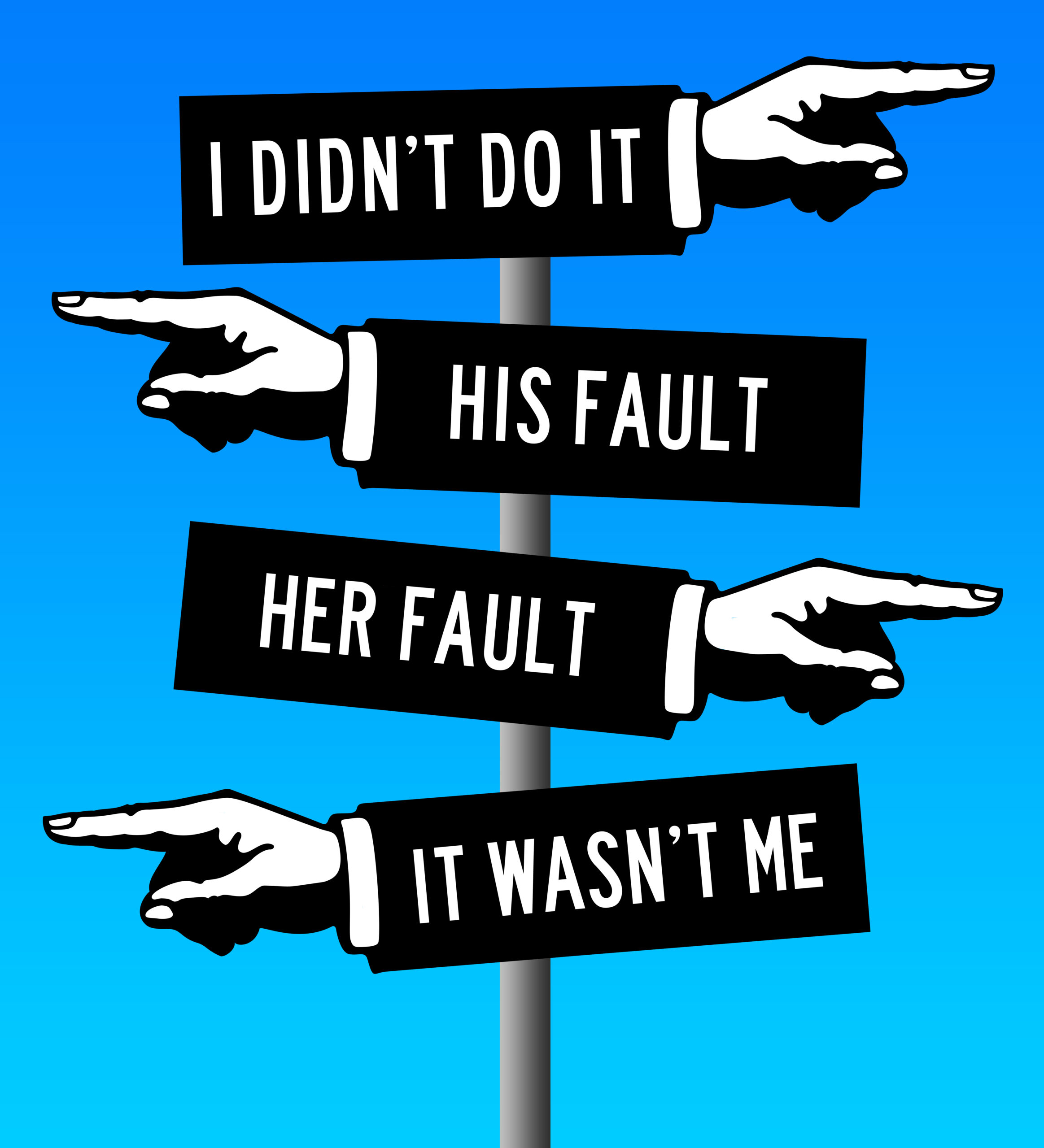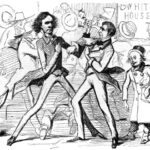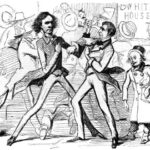A Frequent Cause of Divorce: The Wimpy Guy
A client recently called and asked for an urgent appointment alone. She and her husband have been seeing me primarily because of one potentially relationship-ending issue: “I’m sick and tired of being with a wimp!” she said.
I understand.
Unfortunately, women who complain about their man being a wimp is a common theme in my office, and it’s a tough nut to crack, because the last thing wimpy men want to face is the fact that they are wimpy. So as a therapist, if I poke around with a few questions and conclude that the man has indeed shed his instinctual take-charge manliness and turned himself into a wimp, softie or pleaser, as I like to call them, then I’ve got to use my most artful communication skills to deliver the news. If not delivered delicately and respectfully, the man, who deep inside probably doubts the depth of his masculinity, will protect his fragile ego by switching the blame to me and cast the therapist as a ball-busting, weenie roasting, man-hater and refuse to return to therapy – opportunity lost. If, on the other hand, I can get him to listen to my point and agree that something is amiss, which most will end up doing, the possibilities of changing the relationship from unhealthy and dysfunctional to thriving are tremendous.
So first, let’s understand what happens to too many of our precious men who get caught up in being pleasers, explain the behavior, and then learn what in American culture triggered the epidemic. After that, we can change the world.
Almost all of us take on shame in our childhoods, which is the core belief that we are defective, or something is wrong with us. Once we take on shame, we make the misguided decision that our true defective self must be hidden, so we create a new false self to protect us through life. The false selves that humans create are countless, but the most common ones I see are rebel, procrastinator, lazy, blamer, over-achiever, perfectionist and, of course, the pleaser.
Pleasers exist in our society in the millions, and you will find them in both genders.** The way it plays out is that once a person takes on shame, usually by experiencing rejection or disapproval, it makes sense to them to choose a winning formula that will help them avoid that. So they conclude something like: “Hey, I’ll always be real nice, cheerful and accommodating, will give tirelessly and make everyone else happy, then I’ll get what I need in return.”
So while the pleaser gives selflessly, he receives little and resents intensely, and this creates the fertile ground on which he and his wife will present in therapy – usually in one of two scenarios:
1. The wife is no longer sexually attracted to her husband or he has become (from her perspective) asexual. She wants him to take charge, to make plans, have a strong opinion, exhibit passion about life and her, to take a stand against people who treat them unfairly, to be more adventurous or take a business risk, or to just “be more of a man.”
2. The pleaser has been waiting for his partner to figure him out and meet his needs, but she hasn’t because she cannot read minds. Stored resentment becomes combustible and one day he erupts like a volcano, suddenly spewing the brutal truth about what an inconsiderate, selfish, cruel and horrible woman he is married to. She is dumbfounded. He either wants out or will stay and enter into a period of self-absorption, noncooperation and hostility.
Men often make the misguided decision that what women want is a super-nice man who helps, gives and accommodates, and they truly believe that life will be more peaceful if they let the woman have her way. But all you have to do to find out what makes a woman hot under the collar is to pick up any romance novel and read about the hero – he’s always a sexually passionate man who is kind, but strong. He is wildly attracted to his woman, he takes charge, knows what he wants, is determined, action-oriented, always has a plan, and will go to the end of the earth and slay dragons to show his love for and protect his lady. His woman feels totally adored, cherished and safe by his side. This, at the end of the day, is a slightly exaggerated version of what most women want in a man.
If a man is kind and strong, it allows us to be feminine, which is our natural set point. That way we can be in our male action-energy at work, and turn it off and be soft and vulnerable at home with our strong, kind man. Warning: If a woman has to take charge at work and at home, it will emotionally wear her down.
So how did men turn into wimps? For thousands of years, male and female roles were stereotypical and traditional. Most men were dominant and worked or hunted and provided, and most women were submissive and stayed at home with the kitchen and kids. Then in the 1960’s and 70’s women began to succeed in their fight for equal rights in education and careers, and began entering the workplace in record numbers – and this was good news for us, but it also changed the marriage game as millions of women now capable of taking care of themselves began divorcing their dominating husbands.
While men got softer in order to help around the house and to avoid being a dominating asshole, women got tougher in order to get ahead in their careers, and neither was aware of how important it was not to lose their natural male and female energy once back at home. Men also failed to learn that on one end of the spectrum there is a wimp or a pleaser, and on the other end is the dominating asshole – too many chose to be the wimp thinking it was the right thing to do. However, what women long for and need is the man in the middle who is strong, action-oriented, passionate, take-charge, considerate and kind.
As much as I would love to solve this issue in one blog, the most important thing for now is to raise awareness, as that is the first step in creating change. I feel that the Pleaser Syndrome that exists in both men and women destroys individual happiness, marriages and families. It hurts our society. There are many ways to start the recovery process, and the books listed below are fantastic resources that I highly recommend. ****
*Identifying information has been changed.
** Both men and women can be pleasers, but in this article I am referring specifically to men. For women I recommend the book: “Disease to Please,” by Harriet B. Braiker, Ph.D. http://www.harrietbraiker.com/DiseasetoPlease.htm
*** The books below are highly recommended for men and also influenced the content of this article:
1. “No More Mr. Nice Guy,” by recovered pleaser Robert Glover, Ph.D. http://www.drglover.com/
2. “Hold on to Your N.U.T.S., the Relationship Manual for Men. By Wayne M. Levine, M.A. http://goo.gl/7X8ynM
3. “Way of the Superior Man,” by David Deida. http://www.deida.info/
**** At the core, the Pleaser Syndrome is a symptom of codependence. Here are great resources:
1. The book, “Facing Codependence,” by Pia Mellody: http://www.piamellody.com/
2. Al Anon – for people in relationship with addicts and pleasers: http://www.al-anon.org/
3. CoDA – A 12-step group for people seeking codependence recovery – http://coda.org/
Follow Becky Whetstone, Ph.D., “Doctor Becky” on Twitter: www.twitter.com/doctorbecky
 Becky Whetstone is an Arkansas native and has a Ph.D. in Marriage and Family Therapy from St. Mary’s University in San Antonio, Texas. She is a Licensed Marriage and Family Therapist (LMFT) in Texas and Arkansas.
Becky Whetstone is an Arkansas native and has a Ph.D. in Marriage and Family Therapy from St. Mary’s University in San Antonio, Texas. She is a Licensed Marriage and Family Therapist (LMFT) in Texas and Arkansas. 






















































































































